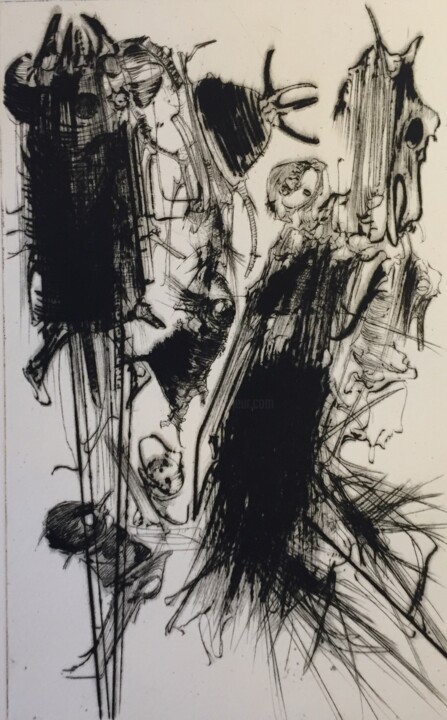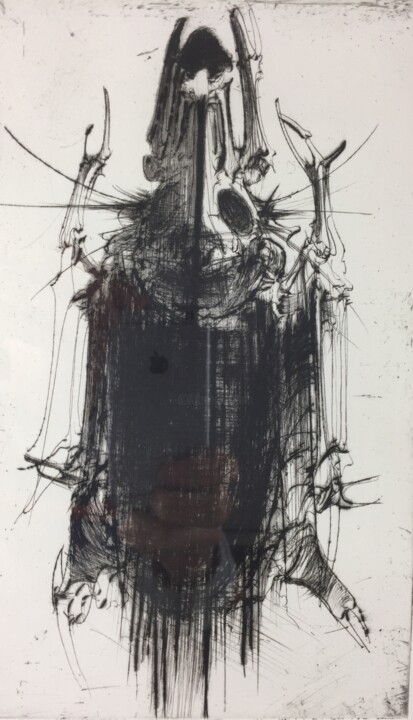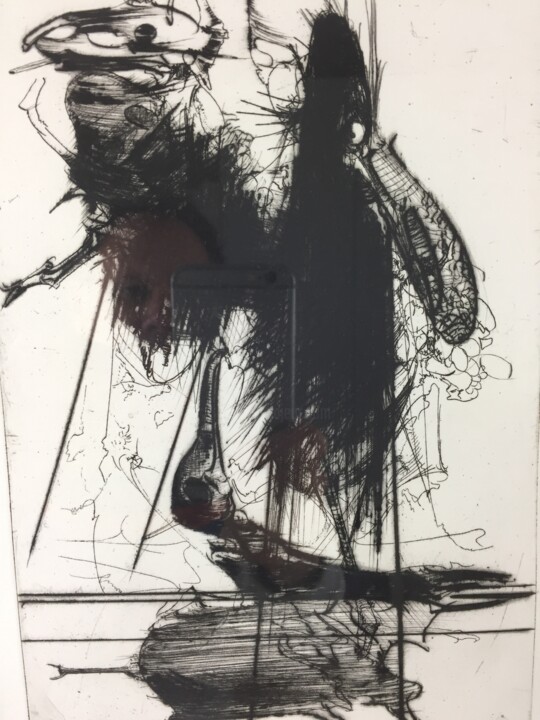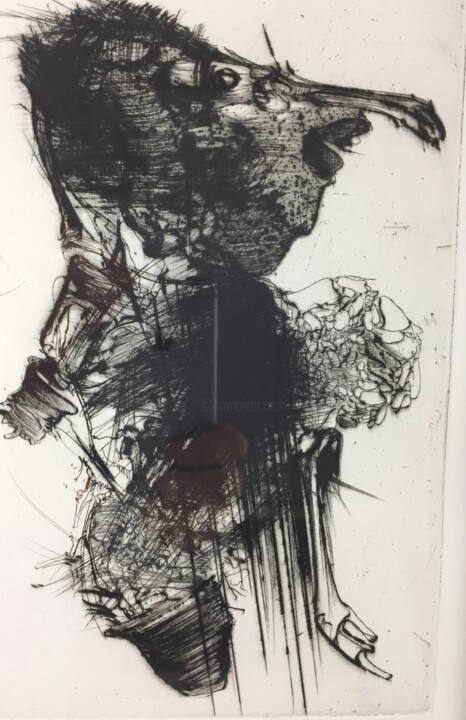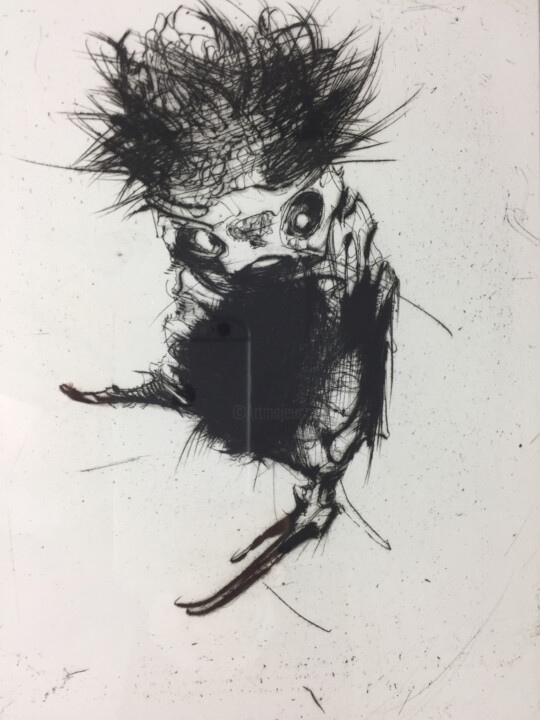Dado artist
Miodrag Đurić, born on October 4, 1933, in Cetinje, Montenegro, and passed away on November 27, 2010, in Pontoise, France, was a renowned artist.
Known by the name Dado, he was an artist of Montenegrin descent who spent the majority of his life and artistic career in France. While he gained particular recognition as a painter, he also excelled as an engraver, draftsman, book illustrator, and sculptor. Within these fields, he emerged as one of the prominent figures of the surrealist movement and fantastic art.
Đurić's upbringing took place in Cetinje, the historic capital of Montenegro, which was then a part of the Kingdom of Yugoslavia. He was raised in a middle-class family, with his mother, Vjera Đurić (née Kujačić), working as a biology teacher and his father, Ranko Đurić, belonging to an entrepreneurial family.
His formative years were shaped by significant world events and personal tragedies. Yugoslavia experienced occupation by Italian and German forces during World War II, while local partisans fought back, eventually leading to the establishment of Tito's Yugoslavia.
At the age of 11, Đurić lost his mother in a country still recovering from the scars of war. He temporarily moved to Slovenia, where he was placed under the care of his maternal uncle. Although he lacked interest in general education, Đurić displayed a strong passion for art and demonstrated early artistic abilities. Recognizing his talent, his family supported his artistic development, and he commenced his studies in fine arts in the coastal city of Herceg Novi from 1947 to 1951.
In 1951, Đurić relocated to Serbia to further his education at the Belgrade School of Fine Arts, where he was heavily influenced by European art movements like Surrealism and Expressionism.
Motivated by one of his instructors in Belgrade, Đurić made the decision to relocate to Paris, France, in 1956, with the aspiration of pursuing his artistic career there. He sustained himself by taking up various odd jobs and eventually secured a position at a lithography workshop managed by Gérard Patrice. Through his professional environment, he swiftly acquired proficiency in the French language, enabling him to engage with established artists like Kalinowski and Jean Dubuffet. These encounters, coupled with the display of his drawings and paintings, piqued the interest of both fellow artists and art dealers.
Daniel Cordier, an art dealer and former resistance fighter, discovered the young Đurić and extended a unique opportunity to exhibit his artwork at his art gallery in 1958. This marked the commencement of Dado's professional career, prompting him to swiftly transition from Paris to the rural surroundings of Vexin. By 1960, he had settled in an old watermill in Hérouval, Oise, which served as a sanctuary for his creativity and social interactions until his passing. During his early years in France, he forged a particularly profound friendship with Bernard Réquichot, a French artist who passed away in 1961.
Dado's period in France is noteworthy for the development of his distinct artistic style. His works became characterized by intricate compositions, hybrid figures, and dreamlike landscapes, often exploring themes of violence, death, and the human condition. Indeed, Dado's artistic output garnered acclaim for its vibrant imagination, enigmatic quality, and exploration of the depths of the human psyche. He has been recognized as one of the significant artists of his generation, and his artistic legacy continues to influence numerous contemporary artists.
Dado dedicated his life to art, pushing the boundaries of creativity and venturing into the realms of imagination. His work remains a source of inspiration and fascination for art enthusiasts worldwide, particularly those drawn to the realms of fantasy and surrealism.
It is worth emphasizing that apart from his accomplishments in painting, Dado also engaged in various other artistic endeavors such as engraving, sculpture, and book illustration. He even collaborated with renowned writers including André Pieyre de Mandiargues and Samuel Beckett. Furthermore, the artist achieved international recognition throughout his career, with his paintings being exhibited in numerous galleries and museums worldwide. He also participated in numerous group and solo exhibitions, showcasing his talent to a broader audience.
Back to talking about personal life of the artist, Dado crossed paths with his wife, Hessie, a Cuban artist, during a trip to New York in 1962. Originating from the Caribbean, she eventually settled in Hérouval, where she tied the knot with Dado and together they raised five children.
Although he mostly remained secluded in his home, detached from the outside world, Dado occasionally ventured out to satisfy his curiosity about the external realm. In 1984, he was honored with the title of Knight of the Order of Arts and Letters. Additionally, he embarked on remarkable journeys, including multiple visits to New York. In 1974, he had a unique experience joining a team of researchers and doctors in Central Africa, spending a month immersed in the rainforest alongside the Pygmies of the Central African Republic. Other notable experiences include an exploration of India in 1992 and a trip to Guatemala in 1997, both of which served as inspiration for his paintings, such as the Boukoko triptych (1974) and Tikal (1998).
Dado passed away at the age of 77 in Pontoise, near Paris, on November 27, 2010.
Why invest in Miodrag Djuric:
- Renowned Artist: Miodrag Djuric, also known as Dado, was a highly acclaimed artist from Montenegro who gained recognition both nationally and internationally. His artistic prowess and contributions have solidified his position as a significant figure in the art world.
Multidisciplinary Talent: Djuric's artistic abilities extended beyond painting. He excelled in various artistic fields such as engraving, sculpture, and book illustration. This breadth of skills adds depth and versatility to his body of work, making it a worthwhile investment for art enthusiasts.
Influential Surrealist: Djuric emerged as one of the prominent figures of the surrealist movement and fantastic art. His unique style, characterized by complex compositions, hybrid figures, and dreamlike landscapes, explored profound themes of violence, death, and the human condition. Investing in his work allows one to own a piece of surrealist art history.
International Recognition: Djuric's artistic accomplishments garnered international recognition throughout his career. His paintings have been showcased in prestigious galleries and museums worldwide, indicating the high esteem in which his work is held. Investing in his pieces not only provides personal enjoyment but also aligns with a broader appreciation of his artistic legacy.
Collaborations with Prominent Writers: Djuric had the opportunity to collaborate with renowned writers such as André Pieyre de Mandiargues and Samuel Beckett. These collaborations demonstrate the interdisciplinary nature of his art and add an extra layer of cultural significance to his work.
Unique Life Experiences: Djuric's personal life and experiences significantly influenced his artistic journey. His travels to different countries, interactions with diverse cultures, and immersion in the natural world fueled his creative process. Investing in his work allows collectors to own pieces that encapsulate these unique life experiences and the artistic expression they inspired.
Lasting Legacy: Djuric's impact on the art world extends beyond his lifetime. His distinctive artistic style continues to inspire and influence contemporary artists. By investing in his work, collectors become part of a legacy that transcends time, connecting them to a broader artistic community.
Investing in Miodrag Djuric's work not only provides an opportunity to own exceptional pieces of art but also contributes to preserving and celebrating the legacy of a highly regarded artist whose influence continues to resonate in the art world today.
Composition sans titre 4 (1990)
In 1966, Dado embarked on his initial foray into the world of etching, specifically employing the drypoint technique, under the guidance of Georges Visat in his workshop. Additionally, he developed a keen interest in lithography during this time. Subsequently, in 1967, he delved into the exploration of copper plate engraving techniques with the assistance of Alain Controu in Normandy. This collaborative effort between Dado and Controu endured throughout the 1990s.
During the 1980s, Dado had the opportunity to further refine his craft in the realm of engraving. Notably, he engaged in artistic endeavors within the Lacourière-Frélaut engraving workshop located in Paris. In addition, he established another workshop in close proximity to Hérouval, where he collaborated with the skilled engraver Biel Genty. A portion of his illustrious body of work as an engraver can now be found within the collections of the Department of Prints and Photography at the National Library of France.
Dado initiated his journey as an exhibitor of his artistic creations in the vibrant city of Paris back in 1958. While his paintings gained substantial recognition, it is worth noting that his etchings are even more scarce and prized. The reason for this lies in the fact that Dado embarked on his first venture into engraving in 1966, and he dedicated his efforts to this particular medium until the 1990s.
Over the course of these years, Dado diligently explored various engraving techniques, honing his skills and pushing the boundaries of artistic expression. He had the privilege of collaborating with two esteemed engraving workshops: the aforementioned Lacourière-Frélaut Engraving workshop, situated in Paris, and the renowned Alain Controu workshop nestled in the picturesque region of Normandy. These fruitful collaborations allowed Dado to delve deeper into the intricacies of engraving, refining his craft and leaving an indelible mark on this artistic discipline.
The artwork portrays an intriguing skeletal entity observed from a bird's-eye view, conjuring the visual essence of both an insect and a larger creature. These two disparate forms seamlessly converge to construct a composition that amalgamates organic elements, symbolic representations of mortality, and the unmistakable aesthetic hallmarks of the "fantasy" genre, closely associated with the artist.
In this meticulously etched piece, Dado has summoned his imaginative prowess, playfully melding together assorted shapes and textures borrowed from various sources. The result is the emergence of an enigmatic figure that beckons the viewer's contemplation. Upon careful observation, it becomes discernible that the configuration bears a resemblance to an insect, with telltale features like wings, antennae, and legs, perceptible from a frontal perspective captured from an aerial vantage point. Additionally, the interplay of lines and curves enables the differentiation of a somber, shadowy body from the pale skeletal head and the presence of short, white appendages reminiscent of legs.
The fastidious attention to detail and the intricate patterns woven throughout infuse the artwork with a captivating allure, endowing the viewer with a surreal and poetic vision. This print serves as a quintessential embodiment of Dado's signature style, renowned for its haunting and dreamlike renderings.
Through this composition, Dado embarks on an exploration of the intricate interconnections between life, death, and the realm of imagination. The utilization of organic and skeletal elements symbolically represents the delicate nature of existence, showcasing how nature has the capacity to undergo transformative processes and seamlessly blend in unexpectedly remarkable ways.
This surreal print stands as a testament to Dado's exceptional talent for crafting images that defy convention and ignite the viewer's imagination. It beckons one to lose oneself amidst its unexpected intricacies and subtle associations, thereby ushering them into an expedition of the subconscious and an introspective journey into the depths of the human condition.
Why invest in Composition sans titre 4 (1990):
- Rarity and Value: Dado's etchings, such as Composition sans titre 4 (1990), are highly sought after and prized due to their scarcity. While his paintings have garnered substantial recognition, his etchings are even more limited in availability. Owning this artwork presents a unique opportunity to possess a rare and valuable piece by the artist.
Mastery of Engraving Techniques: Dado's journey into engraving began in 1966, and he dedicated himself to this medium until the 1990s. Over the course of these years, he tirelessly honed his skills and explored various engraving techniques. Composition sans titre 4 (1990) showcases his mastery of the craft, with meticulous attention to detail and intricate patterns that captivate the viewer's attention.
Signature Style: The artwork epitomizes Dado's distinctive style, characterized by haunting and dreamlike imagery. The enigmatic skeletal figure, blending elements of insects and larger creatures, invites contemplation and evokes a sense of surrealism. Investing in this piece allows one to own a quintessential representation of Dado's artistic vision.
Symbolic Depth: Composition sans titre 4 (1990) delves into profound themes of life, death, and imagination. The juxtaposition of organic and skeletal elements symbolizes the fragility of existence and the transformative power of nature. The artwork serves as a visual exploration of these intricate interconnections, offering a thought-provoking experience for the viewer.
Intriguing and Captivating Aesthetic: The composition's bird's-eye perspective and meticulous execution immerse the viewer in a world of unexpected intricacies. The interplay of lines, curves, and textures creates a visually captivating piece. Composition sans titre 4 (1990) beckons viewers to engage with its enigmatic details, fostering a sense of wonder and imaginative exploration.
Enduring Legacy: Dado's exceptional talent for crafting unconventional and evocative images has left an indelible mark on the art world. Investing in his work, such as Composition sans titre 4 (1990), connects collectors to his enduring legacy and places them in the company of those who appreciate his contributions to the artistic realm.
By investing in Composition sans titre 4 (1990), one not only acquires a rare and valuable artwork but also becomes a custodian of Dado's artistic vision. The piece's symbolic depth, captivating aesthetics, and connection to his enduring legacy make it a compelling choice for art enthusiasts and collectors seeking to immerse themselves in the realm of surrealism and introspection.




 Olimpia Gaia Martinelli
Olimpia Gaia Martinelli

